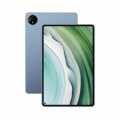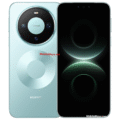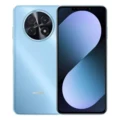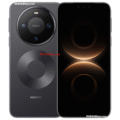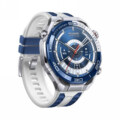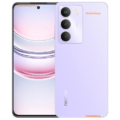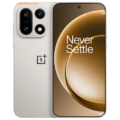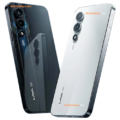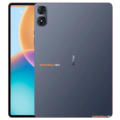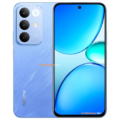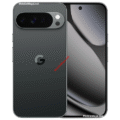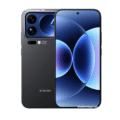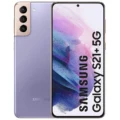Price List: Under Tk.5,000 | Tk.5001-10000 | Tk.10001-15000 | Tk.15001-20000 | Tk.20001-30000 | Tk.30001-40000 | More Mobiles
- Home
- All Mobile
- Huawei
- Huawei MatePad Air (2025)
Huawei MatePad Air (2025)
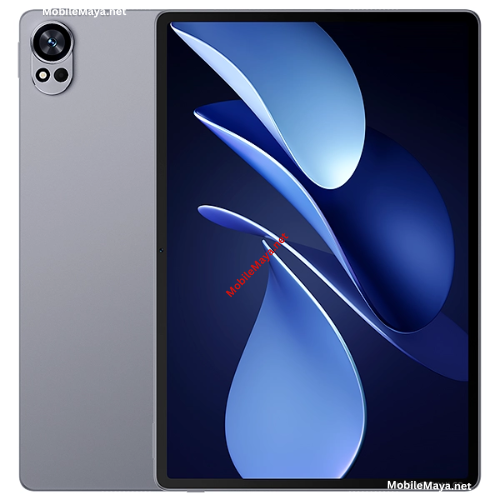

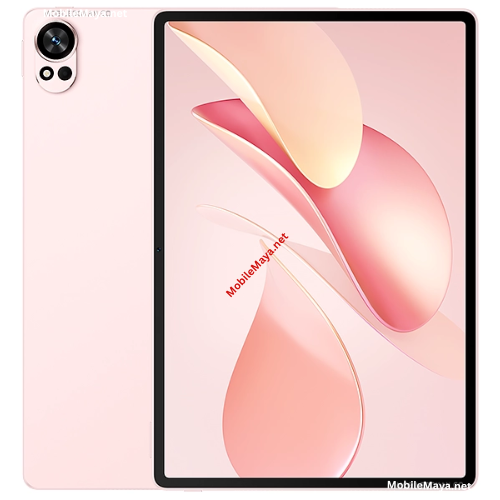
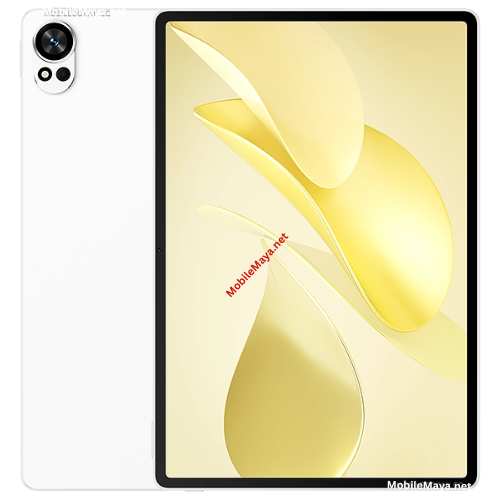
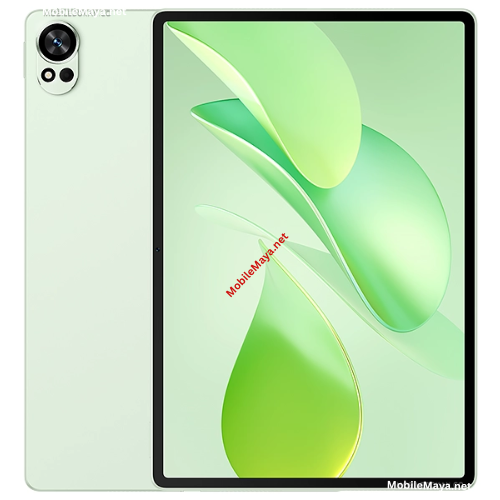
Specifications
Price in Bangladesh
| Expected Price | ৳55,000 |
General
| Device Type | Tablets |
| Model | LRT-W20, LRT-W30 |
| Announced | August, 2025 |
| Released | August, 2025 |
| Status | Available |
Hardware & Software
| Operating System OS => Every computer system run on a base software called Operating System (OS). Operating System controls all basic operations of the computer (such as smartphone, PDAs, tablet computers and other handheld devices). The Operating System allows the user to install and run third party applications (apps), apps are used to add new functionality to the device. | HarmonyOS |
| OS Version | v5.0 |
| Chipset Chipset is a group of integrated circuits designed to perform one or a more dedicated functions, often with real time computing constraints, Popular smartphones are equipped with more advanced embedded chipsets that can do many different tasks depending on their programming. | - |
| CPU CPU (Central Processing Unit) mostly known as processors, CPU processes instructions in order to carry out certain functions that make your device operate properly. Processors are often described as the brain of computers, smartphones and tablets, Smartphones and tablets rely on processors to carry out their every task, Processors are an incredibly important factor in selecting any type of computing device, including your smartphone. | - |
| GPU GPU (Graphics Processing Unit) is a single-chip processor designed to rapidly manipulate and alter memory to accelerate the creation of images in a frame buffer intended for output to a display, This includes things such as lighting effects, object transformations, and 3D motion. | - |
| RAM (Memory) RAM (Random Access Memory) is a type of computer memory that can be accessed randomly, any byte of memory can be accessed without touching the preceding bytes that allows information to be stored and accessed quickly from random locations. RAM is the most common type of memory found in computer systems, smartphones, tablets and other electronic devices. | 12 GB |
Design
| Dimensions | 270 x 183 x 5.9 mm (10.63 x 7.20 x 0.23 in) |
| Weight | 555 g (1.22 lb) |
| Colors |
Pink, Green, White, Gray |
Display
| Display Type Display Technology => A number of display technologies and types used in mobile phones => TFT (Thin Film Transistor), IPS (In-Place Switching), OLED (Organic Light Emitting Diode), AMOLED (Active-Matrix Organic Light-Emitting Diode), Super AMOLED (an even advanced version of AMOLED), Resistive Touchscreen (Resistive touchscreens contain two layer of conductive material with a very small gap between them which acts as a resistance), Capacitive Touchsceen (Capacitive touchscreen technology consists of a layer of glass coated with a transparent conductor) | IPS LCD |
| Size | 12.0 inches, 426.4 cm2 (~86.3% screen-to-body ratio) |
| Resolution | 2800 x 1840 pixels, 3:2 ratio (~279 ppi density) |
| Brightness | 1000 nits (peak) |
| Refresh Rate | 144Hz |
| HDR 10 / HDR+ support |
Rear Camera
| Camera Setup | Dual |
| Main Camera | 50 MP, f/1.8, (wide), PDAF |
| Second Camera | 8 MP, f/2.2, (ultrawide) |
| OIS | |
| Flash Flash Light => There is commonly two types of flash lights are used in camera mobile phones, LED Flash (LED flash offers lower power consumption with drive circuitry that takes up very little room, LEDs can be strobed faster than any other light source), Xenon Flash (xenon flash produces an extremely intense full-spectrum white light for a very short duration) | LED flash |
| Video | 4K@30fps, 1080p@30fps |
Front Camera
| Camera Setup | Single |
| Secondary |
8 MP, f/2.2 |
| Video | 1080p@30fps |
Battery
| Battery Type Battery Type => Cell phones run on various kinds of batteries depending on the manufacturer, phone size or shape and features. There are basically four types of cell phone batteries => Lithium Polymer, Lithium Ion, Nickel Metal Hydride and Nickel Cadmium. | Li-Ion (Lithium Ion) |
| Placement | Non-removable |
| Capacity Battery Capacity is a measure (typically in Amp-hr) of the charge stored by the battery, and is determined by the mass of active material contained in the battery. The battery capacity represents the maximum amount of energy that can be extracted from the battery under certain conditions. | 10100 mAh |
| Quick Charging | 66W wired, UFCS, 100% in 85 min |
| USB Type-C | USB Type-C 3.1 |
Storage
| Storage Capacity | 256 GB, 512 GB |
| USB OTG |
Network
| 2G Network |
N/A |
| 3G Network |
N/A |
| 4G Network |
N/A |
| SIM SIM (Subscriber Identity Module) is a small card that contains mobile network subscriber's account information. This allows the phone using the card to attach to a mobile network. The SIM card is most commonly associated with GSM and UMTS mobile networks. Moving a SIM card from one phone to another allows a subscriber to switch mobile phones without having to contact their mobile network carrier. SIM cards can also be used by a phone to store limited amounts of data, such as phone numbers and text messages. | Standard SIM |
Data
| GPRS GPRS (General Packet Radio Service) is a packet oriented mobile data service on the 2G and 3G cellular communication system's global system for mobile communications (GSM), Generally, GPRS is used for the purpose of wireless data transfer, such as sharing pictures and videos or browsing the Internet via a mobile phone connection. | |
| EDGE EDGE (Enhanced Data GSM Environment) is a wireless network technology generally considered the next step in the 2G network offers data transfer rates up to four times faster than ordinary GSM networks, Generally, EDGE is used for the purpose of wireless data transfer, such as sharing pictures and videos or browsing the Internet via a mobile phone connection. | |
| Speed | No |
| Web Browser Web Browser => a web browser is a software application used to locate, retrieve and display content on the World Wide Web, including Web pages, images, video and other files, The primary function of a web browser is to render HTML, the code used to design or markup webpages. | HTML5 |
Messaging
| SMS SMS (Short Messaging Service) is a text messaging service component of phone, Web, or mobile communication systems. It uses standardized communications protocols to allow mobile phone devices to exchange short text messages over the networks. | Yes |
| MMS MMS (Multimedia Messaging Service) is a standard way to send messages that include multimedia content (audio clips, video clips and images) to and from mobile phones over wireless networks using the WAP protocol. | |
| Email Email (Electronic Mail) is a system for receiving, sending, and storing electronic messages, Similar to a letter, email is text messages that may contain files, images, or other attachments sent via the internet to a recipient by using applications and software prograps. An email address is required to receive email, and that address is unique to the user. | Yes |
| IM IM (Instant Messaging) is an exchange of text messages through a software application, it enable you to create a kind of private chat room with another individual in order to communicate in real time over the Internet. | Yes |
Connectivity
| Bluetooth Bluetooth is a wireless communications technology for exchanging data between mobile phones, headsets, computers and other network devices over short distances without wires, Bluetooth technology was primarily designed to support simple wireless networking of personal consumer devices. | 5.2, A2DP, LE, L2HC |
| Wi-fi Wi-Fi is a popular wireless networking technology using radio waves to provide high-speed network connections that allows devices to communicate without cords or cables, Wi-Fi is increasingly becoming the preferred mode of internet connectivity all over the world. | Wi-Fi 802.11 a/b/g/n/ac/6/7, dual-band |
| Wi-fi Hotspot | |
| Infrared Infrared connectivity is an old wireless technology used to connect two electronic devices. It uses a beam of infrared light to transmit information and so requires direct line of sight and operates only at close range. | |
| USB | USB Type-C 3.1, OTG, magnetic accessory connector |
| GPS GPS The Global Positioning System is a satellite-based radio navigation system, GPS permits users to determine their position, velocity and the time 24 hours a day, in all weather, anywhere in the world, In order to locate your position, your device or GPS receiver must have a clear view of the sky. | No |
| NFC NFC (Near field communication) is a set of standards for smartphones and similar devices to establish peer-to-peer radio communications with each other by touching them together or bringing them into proximity, usually no more than a few inches. |
Media
| FM Radio | No |
| Loudspeaker | Yes, with stereo speakers (6 speakers) |
| 3.5mm Jack | No |
Sensors & Security
| Fingerprint Sensor |
More
| Made By | China |
Performance Tests
PROS
- Stunning 144Hz high-resolution display
- Premium, ultra-slim design
- Long-lasting 10,100mAh battery
- Super-fast 66W charging
- Great audio with six stereo speakers
- Latest HarmonyOS 5.0 with multitasking features
CONS
- No cellular (4G/5G) connectivity
- Lacks GPS and fingerprint sensor
- No 3.5mm headphone jack
- Chipset details not specified
- Accessories (keyboard/stylus) sold separately
Huawei MatePad Air (2025) Price in Bangladesh
The Huawei MatePad Air (2025) is expected to be priced at ৳55,000 in Bangladesh. This premium mid-range tablet comes packed with impressive specifications — including a 12-inch 144Hz IPS LCD display, 12GB of RAM, large 10,100mAh battery, and Huawei’s latest HarmonyOS 5.0. Designed for productivity and entertainment, it offers flagship-like performance in a sleek, ultra-thin aluminum body. Whether you’re streaming, sketching, or multitasking, this tablet delivers a smooth and vibrant experience.
Huawei positions this model as a mid-range flagship tablet, ideal for students, professionals, and creatives who want a powerful device without spending as much as high-end competitors like the iPad Pro or Samsung Galaxy Tab S9.
Price & Variants
| RAM & Storage | Price (BDT) | Status |
|---|---|---|
| 12GB + 256GB | ৳55,000 (Expected) | Available |
| 12GB + 512GB | ৳59,000 (Expected) | Available |
Huawei MatePad Air (2025) Specifications
The Huawei MatePad Air (2025) is a stylish, high-performance tablet released in August 2025. It comes with HarmonyOS 5.0, a bright 12-inch 144Hz display, and a massive 10,100mAh battery that supports fast 66W charging. It’s designed for seamless multitasking, productivity, and high-quality multimedia consumption.
| Feature | Details |
|---|---|
| Model Name | Huawei MatePad Air (2025) |
| Release Date | August 21, 2025 |
| Market Availability | Available |
| Official Price | ৳55,000 (Expected) |
| RAM & Storage | 12GB RAM, 256GB / 512GB storage |
Display and Design
The Huawei MatePad Air (2025) features a 12.0-inch IPS LCD display with a resolution of 2800 × 1840 pixels and a 3:2 aspect ratio—perfect for both work and play. With a 144Hz refresh rate and 1000 nits peak brightness, visuals are crisp, fluid, and vibrant even under bright lighting.
Its ultra-thin 5.9mm aluminum body and light 555g weight make it ideal for portability. Available in stylish Pink, Green, White, and Gray finishes, this tablet combines elegance with modern functionality.
Performance and Processor
Powered by 12GB of RAM and Huawei’s HarmonyOS 5.0, the MatePad Air ensures efficient multitasking and smooth performance. While the specific chipset isn’t listed, Huawei’s tablets in this series typically use Kirin or Snapdragon processors optimized for performance and battery life.
Storage options of 256GB or 512GB provide ample space for apps, documents, and media. Though there’s no mention of expandable storage, users can rely on USB OTG support for external drives. The tablet handles productivity apps, creative tools, and moderate gaming with ease.
Camera and Video
The tablet sports a dual rear camera setup, consisting of a 50MP main wide camera (f/1.8) with PDAF and an 8MP ultrawide lens (f/2.2). You can record stunning videos up to 4K@30fps or 1080p@30fps, perfect for content creation or casual photography.
On the front, there’s an 8MP camera (f/2.2) that supports 1080p@30fps video — ideal for video calls, online classes, and virtual meetings. AI image enhancements and HDR optimization ensure clear, natural-looking photos.
Battery and Charging
A massive 10,100mAh Li-Ion battery powers the MatePad Air, ensuring long hours of productivity and entertainment. The 66W fast charging feature charges the tablet to 100% in about 85 minutes, making it highly efficient for users on the go. The USB Type-C 3.1 port ensures fast data transfer and charging compatibility with modern accessories.
Connectivity and 5G Support
The Huawei MatePad Air (2025) is primarily a Wi-Fi-only tablet, supporting Wi-Fi 6/7 for ultra-fast connectivity. It does not support cellular (4G/5G) networks. Connectivity options include Bluetooth 5.2 (A2DP, LE, L2HC), USB Type-C 3.1, and OTG support. There’s also a magnetic accessory connector for keyboards or styluses, enhancing its productivity potential.
Additional Features
Running on HarmonyOS 5.0, the tablet offers an intuitive, smooth interface optimized for multitasking and Huawei ecosystem integration. It features stereo speakers (6 in total), delivering rich audio for movies and music.
However, there’s no 3.5mm headphone jack, GPS, or fingerprint sensor. Still, its high-quality build, immersive display, and polished user experience make it a versatile device for both entertainment and work.
Reason to Buy
- Large 12-inch 144Hz IPS LCD display with 1000 nits brightness
- Massive 10,100mAh battery with 66W fast charging
- Sleek, lightweight aluminum design (only 5.9mm thick)
- Excellent dual-camera setup for photos and video
- Wi-Fi 6/7 support for ultra-fast internet
- Smooth performance with 12GB RAM and HarmonyOS 5.0
- Stereo speakers for immersive audio
Verdict
The Huawei MatePad Air (2025) is an excellent choice for users seeking a premium tablet experience without the flagship price tag. It’s perfect for students, professionals, and creative users who prioritize display quality, battery life, and portability.
While it lacks 5G and GPS support, its sleek design, powerful battery, and robust performance make it one of the most balanced Android tablets in its class. If you want a high-end tablet for productivity, media, and multitasking — this is a strong contender.
FAQ
Q1: Does the Huawei MatePad Air (2025) support SIM cards?
No, this model is Wi-Fi only and does not support SIM cards or mobile data connectivity.
Q2: What is the charging speed of the MatePad Air (2025)?
It supports 66W fast charging, reaching 100% in around 85 minutes.
Q3: Does it come with a stylus or keyboard?
The tablet supports magnetic accessories such as a stylus and keyboard, but they may be sold separately.
Q4: Can I expand the storage with a microSD card?
There’s no official mention of expandable storage, but USB OTG allows you to connect external drives.
Q5: What operating system does it run?
It runs HarmonyOS 5.0, Huawei’s latest optimized OS designed for tablets.
Alternatives to Huawei MatePad Air (2025)
- Samsung Galaxy Tab S9 FE (2024) – Similar performance with S Pen support and 5G option.
- Xiaomi Pad 7 Pro (2025) – Offers Snapdragon 8+ Gen 1 chipset and competitive pricing.
- Apple iPad Air (M2, 2024) – For users seeking iPadOS and Apple Pencil compatibility.
- Lenovo Tab P13 Pro (2025) – Excellent display and entertainment features at a mid-range price.
User Reviews
Disclaimer Note
We do not guarantee that the information of this page is 100% accurate and up to date.



